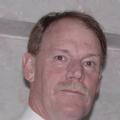AWA - Splendid War Record.
AWA - Splendid War Record.

AWA - Splendid War Record.
The Annual Report of the Chairman of the Board and the Managing Director of A.W.A. given at the 37th Ordinary General Meeting of the Company on October 22, 1945, gave many interesting facts concerning the Company’s wartime achievements which previously it had not been possible to reveal.
The Chairman of the Board, Mr. T. J. Parker, said that following the resignation of Sir Ernest Fisk, Mr. L. A. Hooke was appointed a Director of the Company and also Managing Director.
During the war the Company contributed some 57,000,000 man hours to and £13,000,000 worth of defence equipment was produced by the staff of 5000.
Radio Communications.
The Beam Wireless telegraph service was called upon to handle more than three times its pre-war volume and new radio circuits to the United States, lndia, Ceylon, China, and Barbados were opened at short notice, as well as special wireless provided for the Australian, Royal and United States Navies.
Although communications to ships at sea ceased, one-million-man hours were spent in listening for distress calls alone, of which more than 500 were received. The permanent radio station at New Guinea continued to serve until that country was invaded by the Japanese. That of Port Moresby, in Papua, however, continued throughout the war in spite of the fact that it was subject to more than 100 enemy air attacks. The Company’s staff in this area as the war moved north, went first to Hollandia and then to Leyte, from where many millions of words were sent to Australia.
The Coastal Station at Darwin, which was subject to direct Japanese bombing attacks, renderedvaluable assistance to the forces. Messages to the Troops. In conjunction with Cable and Wireless, special cheap rates were introduced to assist war personnel, and in this respect over 25,000 free messages were despatched between British evacuated children and their parents, and over 1,500,000 messages to the troops were handled for an inclusive charge of 2/6 per message, irrespective of the destination.
One of the circuits installed included the latest seven-unit Multiplex printing equipment, which is not only capable of providing four channels on the one circuit, but gives secrecy and an error proof method of printing. This type of equipment had never before been used over such a long distance and has proved remarkably successful.
The circuits with the United Kingdom, New Zealand and North America are again open to the public and a new system of radio transmission known as single side band will soon be installed, the whole of the necessary equipment being made in the Company’s Radio-Electric works at Ashfield.
Marconi School.
The Company’s Marconi school has trained thousands of operators and technicians for the Fighting Services and the Merchant Navy, while the Marine Department has equipped a large number of vessels with apparatus of all types and has supplied operating staff for Australian and other Allied ships. Special instructional classes in radio technique and operating for officers and men of the A.I.F. and R.A.A.F. were instituted, and more than 4,000 personnel passed through this school. As was to be expected the company’s radar work was outstanding and ranks with the world’s best. The manufacture of the equipment supplied to the American and British Services involved continuous investigation by the staff of the research laboratories.
Aircraft Instruments.
Aircraft Navigational and Engine instruments, such as gyroscopic compasses, artificial horizons,altimeters, airspeed indicators and other instruments were produced and fitted to Australian bomber and fighter aircraft, in all, 70,000 instruments being supplied. The Amalgamated Wireless Valve Company, a subsidiary, produced some 4,000,000 valves of more than 100 types and set up a special section for the development of radar valves.
The Company’s ammunition annexe, erected at its own expense for the manufacturing of gun ammunition, produced many millions of shell fuses armour piercing cores and aircraft shells. This section alone employed about 800 people. Important work was carried out in the field of tropic proofing, the company setting up a special mycological laboratory, which did remarkable work in developing materials suitable for the New Guinea conditions.
Building & Engineering January 24, 1946, Pages 53-54.
To thank the Author because you find the post helpful or well done.